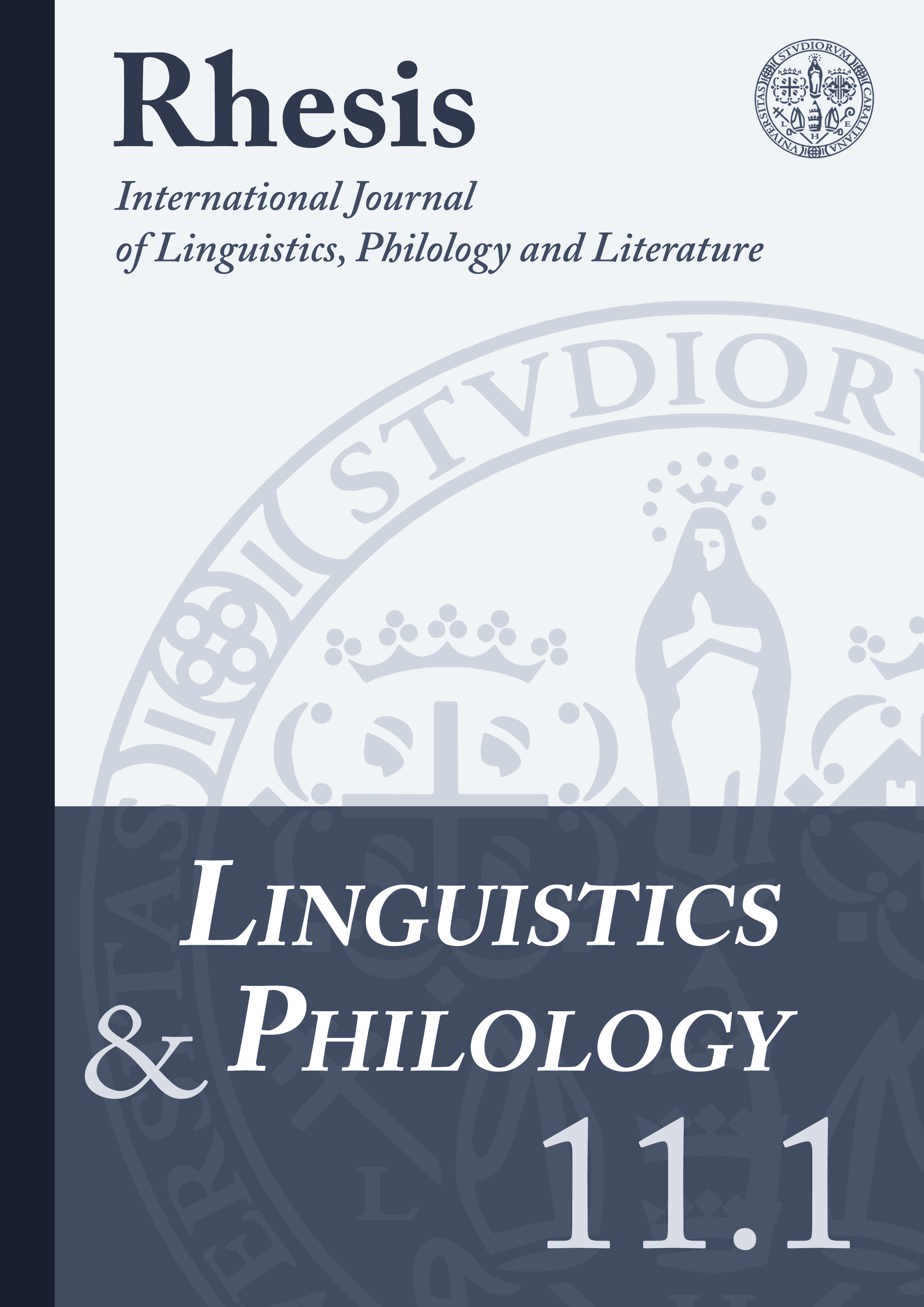On the Course of Sage Agastya (Canopus). A Literary Study of Bṛhatsaṃhitā’s Twelfth Chapter
Abstract
Varāhamihira’s Sanskrit astrological and divinatory compendium, Bṛhatsaṃhitā (6th century CE), is distinguished for its adaptation of the kāvya style and aesthetics to several divinatory prognostications. Accordingly, the entire work may be classified as kāvyaśāstra, a scholarly treatise that incorporates elements of poetry. The uniqueness of its twelfth chapter, Agastyacārādhyāyaḥ ‘On the course of sage Agastya’ lies in the fact that the astrologer fashions it into a deliberate display of his poetic proficiency. In this chapter, the practical instructions concerning the observation and divinatory import of the star Agastya (Canopus) merge with poetic stanzas meant to demonstrate Varāhamihira’s acquaintance with various constituents of the kāvya style. The first aim of this study is to specify the poetic devices employed in the chapter, including a variety of classical Sanskrit metres, canonical themes, figures of speech, plot construction and intertextual references. The second aim is to recognise the purpose and significance of the chapter within the context of the entire work.
Downloads
References
Boccali, Giuliano (2005), ‘The Sea in Ancient India’s Literary Landscape: Pravarasena’s Setubandha II, 1-36’, Cracow Indological Studies 7, 115-123.
Bronkhorst, Johannes (2014-2015), ‘The Magas’, Brahmavidyā: The Adyar Library Bulletin 78-79, 459-486.
Bronner, Yigal (2012), ‘A Question of Priority: Revisiting the Bhāmaha-Daṇḍin Debate’, Journal of Indian Philosophy 40 (1), 67-118.
Hahn, Michael (1981), Indian Metrical Literature, Lecture held at The Reiyukai Library, Tokyo.
Hiltebeitel, Alf (1977), ‘Nahuṣa in the Skies: A Human King of Heaven’, History of Religions 16 (4), 329-350.
Gerow, Edwin (1971), A Glossary of Indian Figures of Speech, Paris-Hague, Mouton.
Ghosh, Manomohan (1951), The Nāṭyaśāstra ascribed to Bharata Muni. Completely translated for the first time from the original Sanskrit with an Introduction and Various Notes by Manomohan Ghosh, Calcutta, Asiatic Society of Bengal.
Lahiri, Prakas Chandra (1987), Concepts of Rīti and Guṇa in Sanskrit Poetics in their Historical Development, Delhi, V. K. Publishing House.
Lienhard, Siegfried (1984), ‘A History of Classical Poetry. Sanskrit-Pali-Prakrit’, in Gonda, Jan (ed.), A History of Indian Literature, 3.1, Wiesbaden, Otto Harrassowitz.
Matyszkiewicz, Ariadna (2016), Wymiar literacki dwunastego rozdziału Brihatsamhity w kontekście ontologii dzieła oraz relacji kawji i śastry [The Literary Dimension of Bṛhatsaṃhitā’s Twelfth Chapter in the Context of Work’s Ontology and Relations between kāvya and śāstra], Kraków, Jagiellonian University MA thesis.
Matyszkiewicz, Ariadna (2017), ‘Magia uczonego poety, czyli odczytywanie świata w Brihatsamhicie Warahamihiry’ [The Magical Image of the World in Varāhamihira’s Bṛhatsaṃhitā], Magazyn antropologiczno-społeczno-kulturowy MASKA 33, 105-115.
Matyszkiewicz, Ariadna (2018), ‘Are Great Natural Objects in Sanskrit mahākāvya Sublime? A Preliminary Study on the Longinian Notion of the Sublime and the Practice of Sanskrit Classical Poets’, The Polish Journal of the Arts and Culture n.s. 7, 55-76.
Morgan, Les (2011), The Croaking Frogs. A Guide to Sanskrit Metrics and Figures of Speech, Columbia, SC, Mahodara Press.
Peterson, Indira Viswanathan (2003), Design and Rhetoric in a Sanskrit Court Epic. The Kirātārjunīya of Bhāravi, Albany, State University of New York Press.
Pingree, David (1981), Jyotiḥśāstra. Astral and Mathematical Literature, Wiesbaden, Otto Harrassowitz.
Sastri, V. Subrahmanya; Bhat, M. Ramakrishna (1946), Varahamihira’s Brihat Samhita with an English Translation and Notes, Bangalore City, Soobbiah and Sons.
Shastri, Ajay Mitra (1991), Varāhamihira and his Times, Jodhpur, Kusumanjali Prakashan.
Sudyka, Lidia (2006), Od Ramajany do dydaktyki, czyli zagadki poematu Bhattiego [From the Rāmāyaṇa to Didactics or the Riddles of the Bhaṭṭikāvya], Kraków, Księgarnia Akademicka.



